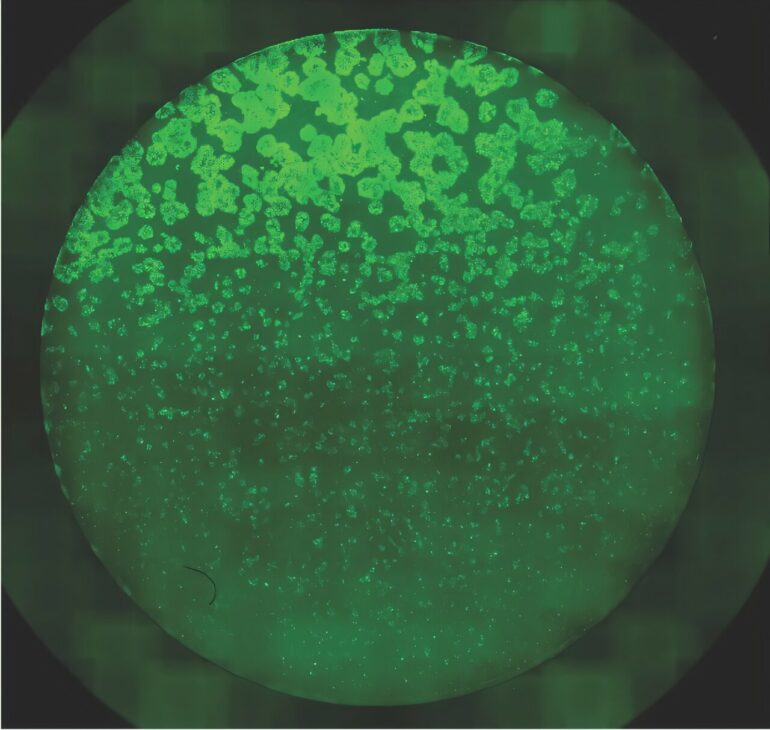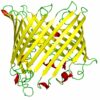Genes aren’t the sole driver instructing cells to build multicellular structures, tissues, and organs. In a paper published in Nature Communications, USC Stem Cell scientist Leonardo Morsut and Caltech computational biologist Matt Thomson characterize the influence of another important developmental driver: cell density, or how loosely or tightly cells are packed into a given space.
In both computational models and laboratory experiments, the team of scientists used cell density as an effective tool for controlling how mouse cells pattern themselves into complex structures.
“This paper represents progress towards our big picture goal of engineering synthetic tissues,” said Morsut, an assistant professor of stem cell biology and regenerative medicine, and biomedical engineering at the Keck School of Medicine of USC.
“Synthetic tissues could have endless medical applications, ranging from testing potential drugs or therapies to providing grafts or transplants for patients.”
The study used two types of mouse cells—connective tissue cells and stem cells—engineered to carry a synthetic cellular communication system or “genetic circuit.” This circuit is based on something Morsut developed called “synNotch,” which is a protein that scientists genetically engineer into a cell to serve as a “sensor.”
Located on a cell’s surface, this protein-based sensor recognizes an external signal that triggers the cell to respond—usually by turning on a user-defined gene.
For this particular series of experiments, the scientists used synNotch to turn on a circuit that includes green fluorescence and a way to propagate the signal further—although it could be used to turn on any gene. The fluorescence made it easy to observe cells as they formed patterns. For example, in a field of cells, scientists could create a pattern of green fluorescent rings emanating from a central point.
Unexpected discovery
While conducting these experiments, co-first author Marco Santorelli, a postdoc in the Morsut Lab, noticed that genetically identical cells did not always produce the same patterns.
“We would see different outcomes of the patterning when we would start with genetically identical cells in different numbers,” said Morsut.
“So that was puzzling at the beginning. I remember Marco came in and told me once that the experiment worked, but only in half of the plate. And when we looked at it more carefully, we started seeing that there was a gradient of cell density that seemed to correlate with differences in patterning.”
Above a certain cell density, synNotch exerted a weaker effect and didn’t produce the same patterns. Further complicating matters, cell density constantly shifted as cells proliferated at ever changing rates—interacting in complex ways with the synNotch genetic circuit.
Does it compute?
Co-first author Pranav S. Bhamidipati, a candidate in the USC-Caltech MD-Ph.D. program who was a member of both the Morsut and Thomson labs, became interested in building a computational model that could predict and clarify this complex and dynamic cell behavior.
“For me, this was one of the first times in my life where computational modeling has been able to predict behaviors that look like what actually happens in the cells,” said Thomson, who is an assistant professor of computational biology at Caltech and an investigator with the Heritage Medical Research Institute.
“Here, it helped guide us to think about how the cell density, proliferation rate, signaling, and all these different things conspire.”
Morsut added, “We were happy that we had the computational model to really explore and get a sense of what are the possible different patterns, and how to move from one to another.”
Guided by the computational model, the scientists were able to use cell density to generate a variety of predictable fluorescent patterns that developed over specific timeframes.
Discover the latest in science, tech, and space with over 100,000 subscribers who rely on Phys.org for daily insights.
Sign up for our free newsletter and get updates on breakthroughs,
innovations, and research that matter—daily or weekly.
It’s okay to be a little dense
To understand how cell density was exerting these effects, co-first author Josquin Courte, a postdoc in the Morsut Lab, conducted a series of experiments that yielded a surprising discovery. Greater cell density induces stress that leads to a quicker breakdown of not only synNotch in particular, but also cell surface sensors in general.
This means that cell density is a broadly applicable tool for guiding both engineered and naturally occurring cells to build a vast array of structures, tissues, and organs.
“Nature has relied on cell density in conjunction with genetic circuits to generate the remarkable diversity of multicellular structures, tissues, and organs,” said Morsut.
“Now we can co-opt this same strategy to advance our efforts to build synthetic multicellular structures—and eventually tissues and organs—for regenerative medicine.”
More information:
Nature Communications (2024). DOI: 10.1038/s41467-024-53078-8
Provided by
Keck School of Medicine of USC
Citation:
By exerting ‘crowd control’ over mouse cells, scientists make progress towards engineering tissues (2024, November 19)



